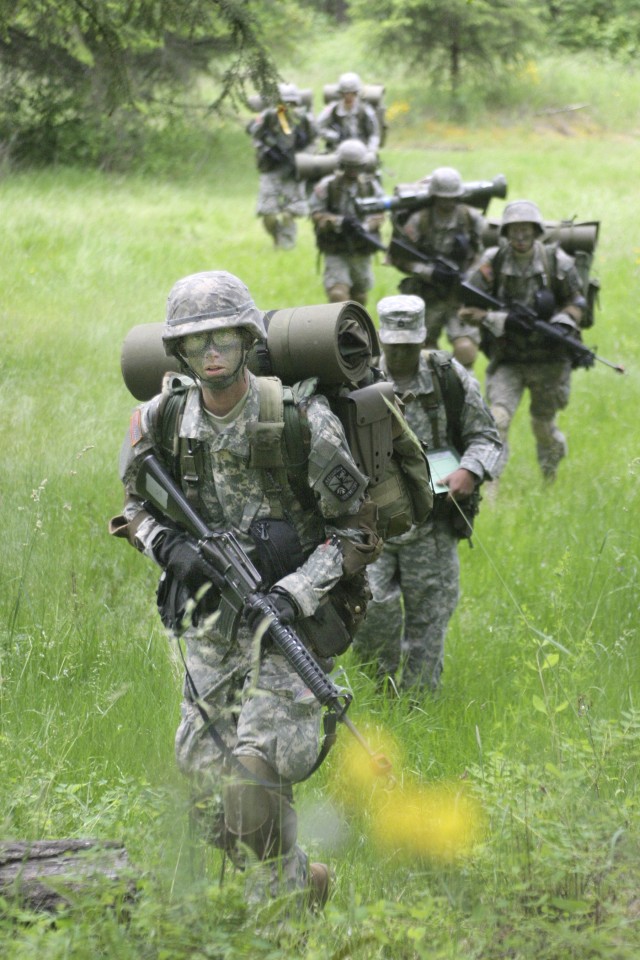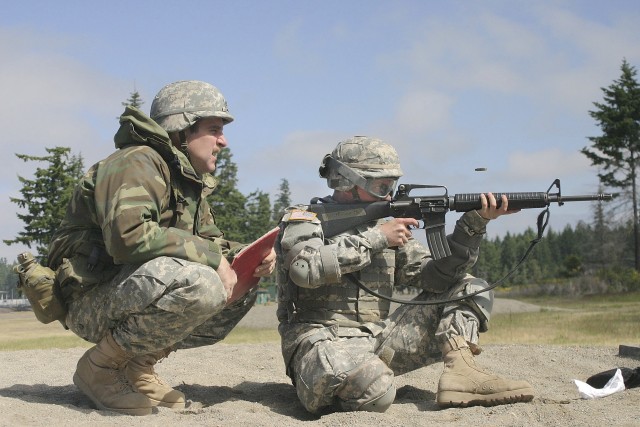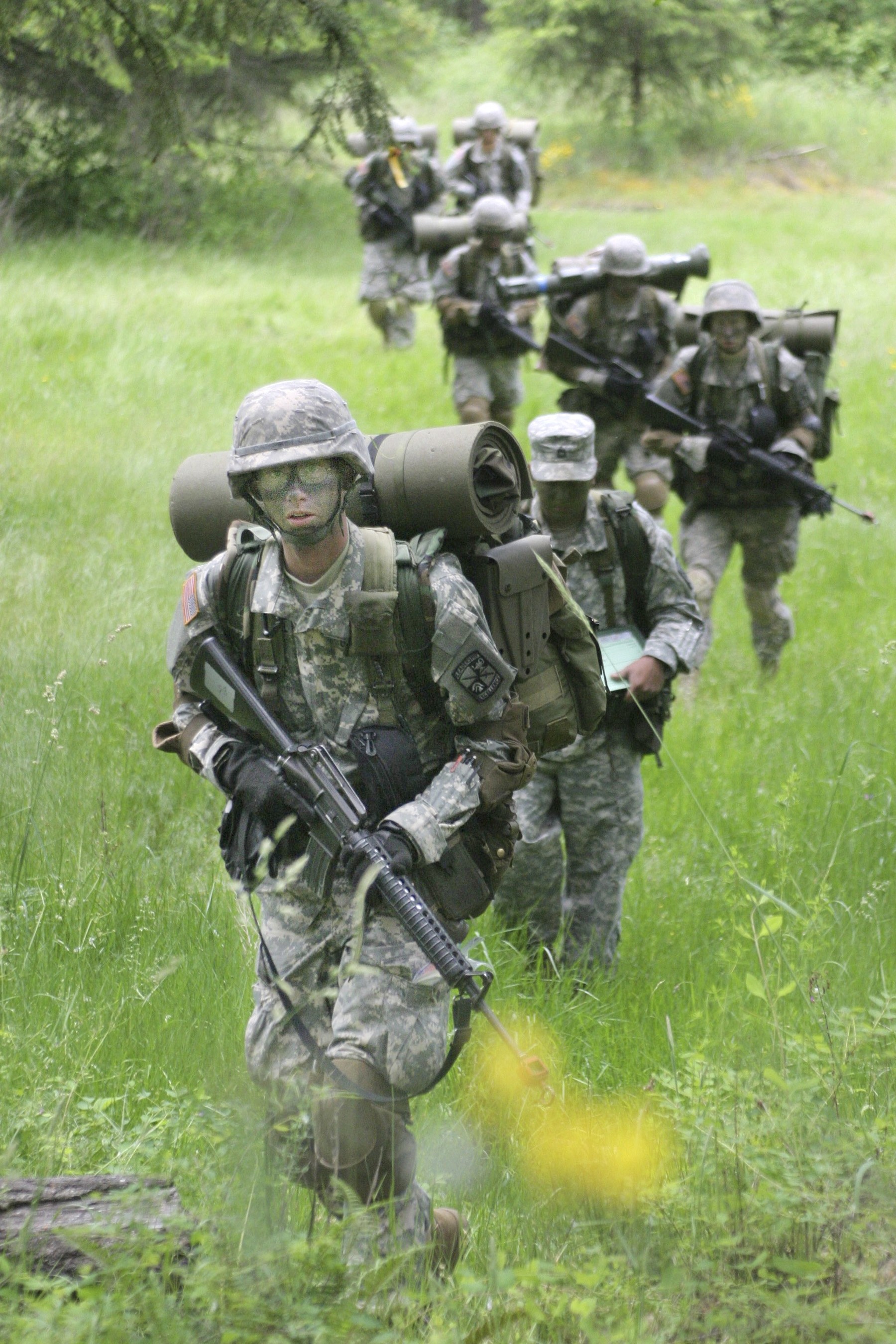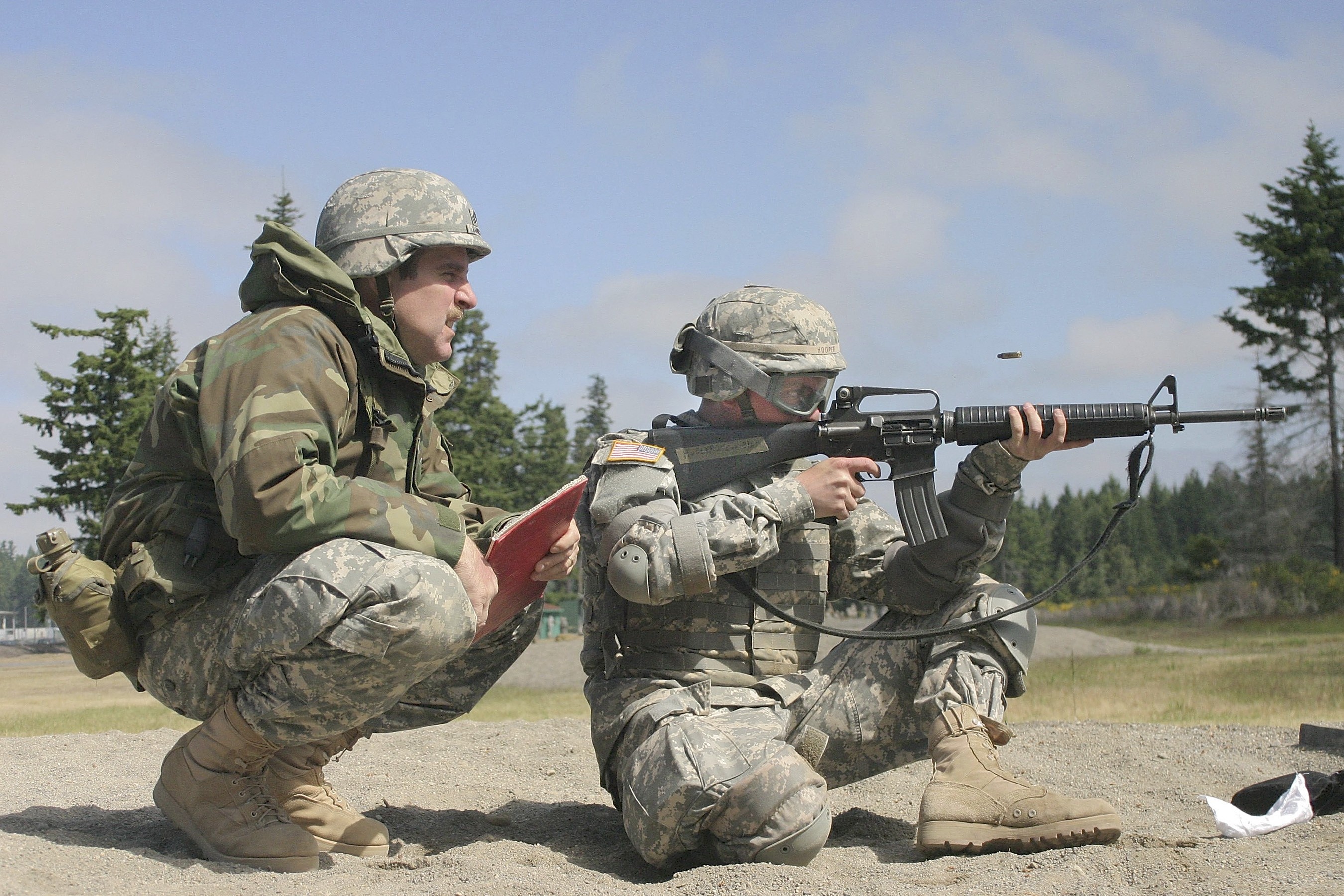FORT LEWIS, Wash. - Every summer, Fort Lewis, becomes the home for the largest U.S. Army training exercise in the continental United States, Operation Warrior Forge.
The exercise, also known as the Leader Development and Assessment Course, is how Army Reserve Officer Training Corps trains and assesses the next generation of officers prior to their being commissioned as second lieutenants.
Warrior Forge each year consists of individual training, such as the Army Physical Fitness Test, land and water confidence courses, land navigation, basic rifle marksmanship and tactical training; and also leadership-specific training as earned in squad and patrolling exercises.
Reservists, Guardsmen, Active Component Soldiers, civilians and contractors from across the country take part to make the operation a success. Fort Lewis Soldiers and civilians play a major role as well, with the 191st Infantry Brigade serving this year as the primary support unit, while a variety of post agencies perform thousands of tasks so the training can succeed.
"When I first took charge of Cadet Command," said Maj. Gen. W. Montague Winfield, "it took me a little while to see just what kind of organization I had inherited from my predecessor. I soon realized that this is a team of teams - professionals who come from all over this great land for a common purpose."
And that purpose is to train and evaluate ROTC cadets to be commissioned as officers, leaders for America\'s Army as it conducts the global war on terrorism and defends the shores and interests of the United States. It's no small task and the trainers and maintainers generally match or outnumber the cadets, of whom nearly 5,300 are expected at LDAC for 2008.
The commander of Operation Warrior Forge, Col. Frank Ippolito, said the varied experiences of the diverse team that supports LDAC provides just the right mix to ensure cadets' fitness to be an officer is properly assessed before commissioning.
"Across the board, Warrior Forge cadre arrive at Fort Lewis with a vast amount of hard-won skills," Ippolito said. "And we have responded to the test of war by honing the training events at Warrior Forge. Cadets who graduate from Warrior Forge will not only have the basic skills critical to being a competent officer, but equally important, they will have the advanced leadership skills vital to leading American Soldiers."
Now in its 22nd year, Cadet Command has approximately 28,000 cadets enrolled in college programs and some 286,000 JROTC cadets at high schools. LDAC is the single most important event in any cadet's student career, since successful completion of the 32-day training cycle is an essential requirement for commissioning. Last year, 4,088 second lieutenants were commissioned through ROTC.
The sheer magnitude of LDAC makes a significant impact on Fort Lewis each summer, but the energy put into making it work is well worth the effort of every participant.
Since ROTC was first established in 1919, more than half a million new officers have been commissioned from its cadet ranks, 100,000 of them in the last 20 years since Cadet Command was established. Fort Lewis has been the only site in the nation for this crucial training since 1997 and is expected to be such for years to come. It is a team of teams and will continue to produce the best Army officers in the world.
Furman Neeley works in Western Region Cadet Command Public Affairs Office.




Social Sharing